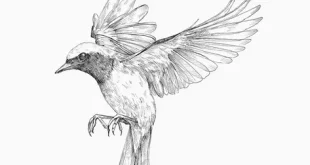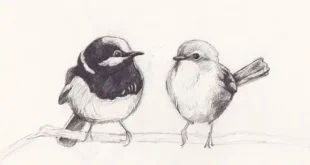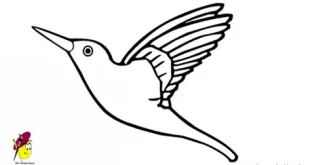Killdeer Bird: Graceful Shoreline Dwellers of Open Fields and Wetlands
1. Appearance and Physical Features of Kill deer bird
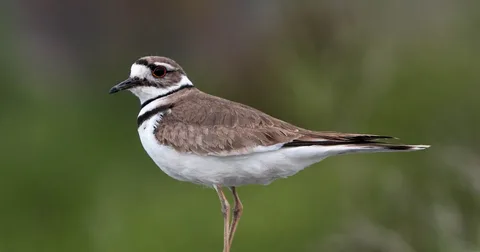
Kill Deer Bird are slender, medium-sized plovers, recognized by their brownish upperparts and striking double black breast bands. Their underparts are clean white, contrasting beautifully against earthy tones of their wings and backs during flight. With long legs adapted for foraging, they move gracefully across sandbanks, meadows, and marshy environments. Kill Deer Birds large, dark eyes stand out, adding alertness to their expressive faces. Another distinctive feature is their shrill, high-pitched call, often heard long before these birds are spotted. Killdeer typically measure between twenty and twenty-eight centimeters, making them slightly larger than many other plovers. Their long, pointed wings help them cover considerable distances during seasonal migrations. A red eye-ring, often visible in close encounters, further highlights their charm. This combination of markings and postures makes them relatively easy for birdwatchers to identify in diverse habitats across continents.
2. Habitat and Distribution Across Regions

The habitat of Kill Deer birds ranges widely, from shorelines and riverbanks to grassy fields and even human settlements. Unlike many plovers, these birds have adapted successfully to farmlands, golf courses, and urban parks. They are found abundantly throughout North America, with some populations migrating southward to Central and South America during colder months. Preferred locations include sandy or gravel-rich open spaces, providing both camouflage and abundant food sources. Their adaptability is noteworthy, allowing them to flourish in both wild and disturbed landscapes. Killdeer demonstrate strong site fidelity, often returning annually to the same breeding grounds. In temperate regions, they may remain resident year-round, provided food and shelter remain available. Their resilience in utilizing diverse ecosystems reflects their versatile feeding strategies and tolerance for human-altered environments. This widespread distribution ensures consistent encounters for bird enthusiasts across various geographic zones and seasons.
3. Feeding Habits and Foraging Techniques
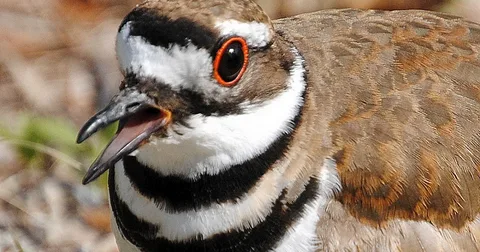
Kill Deer Bird are primarily insectivorous, consuming a wide variety of beetles, caterpillars, grasshoppers, and other invertebrates. They are also opportunistic feeders, occasionally eating seeds, small crustaceans, or aquatic invertebrates depending on habitat availability. Foraging usually occurs in open fields, shorelines, or mudflats, where they employ a distinct run-stop-peck technique. Their long legs allow quick movements across sandy or grassy terrain while scanning for prey with keen eyesight. They are most active during dawn and dusk, capitalizing on insect activity near wetlands and shallow waters. These birds also exhibit interesting behaviors like foot-trembling, where they vibrate their feet against soil to disturb hidden prey. By utilizing such clever techniques, they maximize feeding opportunities in diverse environments. This adaptability ensures survival even in modified landscapes, proving essential for thriving in regions influenced by agricultural or urban development.
4. Breeding Behaviors and Parental Strategies
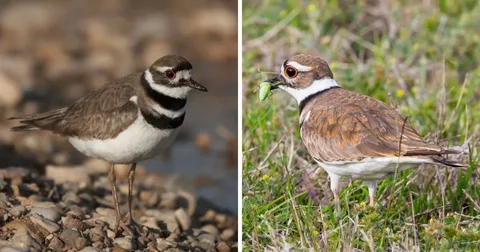
Breeding season brings fascinating displays, as killdeer birds engage in aerial calls and ground-based distraction rituals. Males often perform elaborate flights, circling above territories with characteristic vocalizations to attract females and deter rivals. Nests are simple scrapes in gravel or bare ground, often lined with small stones or grass fragments for camouflage. Females usually lay four mottled eggs, blending perfectly with surrounding surfaces, making detection difficult for predators. Both parents share incubation duties, typically lasting around twenty-eight days before hatching. When threatened, adults perform the famous “broken-wing display,” feigning injury to lure predators away from nests. Chicks are precocial, leaving nests within hours, capable of running and feeding almost immediately. This remarkable self-sufficiency allows survival in exposed habitats. Strong parental vigilance combined with cleverly camouflaged eggs ensures successful reproduction across diverse environments. These breeding strategies highlight the resilience and ingenuity of this species.
5. Importance in Ecosystems and Human Interaction kill Deer Birds.
Killdeer birds hold ecological importance by controlling insect populations, contributing significantly to natural pest regulation in agricultural areas. Their presence benefits farmers indirectly by reducing harmful pests without chemical intervention. However, nesting in human-modified spaces occasionally leads to conflict, as ground nests are vulnerable to machinery and foot traffic. Despite these risks, their adaptability demonstrates remarkable coexistence with expanding urban development. Birdwatchers appreciate their distinctive calls and dramatic defense behaviors, making them popular among wildlife enthusiasts. They also serve as environmental indicators, reflecting habitat health and biodiversity across ecosystems. Conservation efforts remain important, focusing on preserving open grasslands, wetlands, and agricultural landscapes where they thrive. By balancing ecological roles and adapting to anthropogenic changes, these birds illustrate the interconnection between wildlife and human landscapes. Their resilience emphasizes the importance of harmonizing conservation practices with sustainable land use worldwide.
 Birds Drawing Birds Drawing
Birds Drawing Birds Drawing

